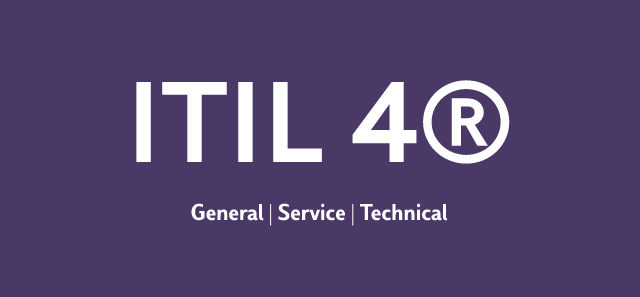An Introduction to ITIL4® Management Practices
In the modern world, Information Technology (IT) is an instrumental aspect of any organisation.
Effective IT management can influence the success or failure of an organisation, and IT Infrastructure Library (ITIL) is a widely recognized framework for managing IT services.
ITIL has been in use for over 30 years, developing over time to adapt to modern organisation's needs. The latest version, ITIL4, was released in 2018 and includes the most up to date concepts and practices relevant to modern organisations.
ITIL4 Management Practices provide a comprehensive and integrated approach to IT service management, offering guidance on how to align IT services with its objectives, improve customer satisfaction, and increase efficiency and effectiveness.
- What Are ITIL Management Practices?
- Why is it Important to Understand Management Practices for ITIL?
- What Are the Three Areas of Management Practice?
- ITIL4 General Management Practices
- ITIL4 Service Management Practices
- ITIL4 Technical Management Practices
- Final Notes On Management Practises and ITIL 4
What Are ITIL Management Practices?
ITIL (Information Technology Infrastructure Library) Management Practices refer to a set of guidelines and best practices for managing IT services.
The ITIL framework provides a comprehensive and integrated approach to managing IT services, with a focus on aligning IT services with organisational objectives, improving customer satisfaction, and increasing efficiency and effectiveness.

(You might also be interested in our ITIL4 Foundation Training Course on this link).
ITIL Management Practices cover a wide range of topics, these include, but are not limited to:
- Continual Improvement
- Change Management
- Incident Management
- Problem Management
ITIL Management Practices are used by organisations of all sizes, and across all industries. The framework is constantly evolving to meet the demands of organisations and the technology landscape, with the latest version, ITIL4, introducing new ideas and practices to help organisations navigate the modern age of technology. By implementing ITIL Management Practices, organisations can improve their IT services, decrease costs, and increase customer satisfaction.
Why is it Important to Understand Management Practices for ITIL?
Understanding ITIL Management Practices is important for many reasons, including:
- Improved Service Delivery
- Improved User Experience (UX)
- Increased Efficiency
- Compliance
- Competitive Advantage
These are just a few reasons why understanding and implementing ITIL Management Practices within an organisation can be key to success.
Improved Service Delivery
Using the ITIL Management Practices allows organisations to efficiently, and effectively deliver IT services that are directly aligned with the organisation’s objectives and the needs of the customer.
Improved User Experience
Acquiring and retaining customers is an essential part of business. ITIL Management Practices guide organisations into understanding and addressing customer needs, and improving customer satisfaction, allowing for easier growth and retention of customers.
Increased Efficiency
ITIL Management Practices provide guidance on how to streamline IT service delivery processes, reducing waste, freeing resource, and improving productivity for IT professionals.
Compliance
ITIL Management Practices are often used as a framework for IT service management audits, ensuring compliance with industry standards and regulations.
Competitive Advantage
Adopting ITIL Management Practices ultimately leads to improved IT Service Delivery, giving organisations a competitive edge by efficiently delivering high-quality services that have identified and meet customer needs.
What Are the Three Areas of Management Practice?

General Management Practices
These practices provide a foundation for IT service management, covering topics such as leadership, governance, risk management, and measurement and reporting.
Service Management Practices
These practices are focused on managing the end-to-end lifecycle of IT services, from inception, design and development to delivery and support. They cover areas such as the ITIL V3 lifecycle phases of service design, service transition, service operation, and continual service improvement.
Technical Management Practices
These practices are focused on the technical aspects of IT service management, covering topics such as infrastructure and platform management, software development and management, and deployment management.
These practices provide organisations with a comprehensive and integrated approach to IT service management. In this post, we will introduce the 34 ITIL4 Management Practices, organised into the three areas.
ITIL4 General Management Practices
Architecture Management
The purpose of the architecture management practice is to deliver an understanding of each component that makes up an organisation and how those elements connect. It provides the values, standards, and tools that enable an organisation to manage complex change in a structured and Agile way.
By implementing a well-managed and structured approach to Architecture Management, an organisation can ensure that services can maintain their integrity and allow scalability in line with development needs.
Continual Improvement
The purpose of the continual improvement practice is to align the organisation’s practices and services with the evolving needs of the organisation, through ongoing development of these areas. There are several techniques available when implementing Continual Improvement practices.
Strength, Weakness, Opportunity and Threat (SWOT) Analysis, balanced score card reviews and assessments and audits are all options. Each organisation should consider methodologies and techniques that are relevant to their individual needs.
Information Security Management
The purpose of the information security management practice is to safeguard the data needed by the organisation to support daily function.
This includes understanding and protecting against risks to the confidentiality, integrity, and availability of information, as well as other aspects of information security such as authentication (ensuring someone is who they claim to be) and non-repudiation (ensuring that someone can’t deny that they took an action).
Knowledge Management
The purpose of the knowledge management practice is to maintain and improve the effective, efficient, and convenient use of information and knowledge across the organisation.
‘Knowledge’ could refer to information, skills, practices, or several other assets in various forms. The knowledge management practices aim to provide a comprehensive approach to defining, creating, and sharing these assets to provide value to an organisation.
Measurement and Reporting
The purpose of the measurement and reporting practice is inform decision making and promote continual improvement by providing valuable, actionable insights. Data owned by an organisation can be measured, analysed and reported on to provide quantifiable information in a relevant context.
By measuring all aspects of an organisation, this practice is the foundation for understanding and creating Critical Success Factors (CSFs), Key Performance Indicators (KPIs), and actionable data for reporting and dashboards.
Portfolio Management
The purpose of the portfolio management practice is to ensure that the organisation has the appropriate programmes, projects, products, services, or other assets needed to effectively operate day to day functions within the context of individual restraints.
Portfolio Management is a key driver for decision making in relation to allocation, deployment, and management of resources within an organisation.
Organisational Change Management
The purpose of the organisational change management practice is to reduce resistance and help guide changes, in a manner that negates harmful impacts and provides adequate resource to support the change.
Organisational change management aims to achieve this by managing the human aspects of the changes.
Project Management
The purpose of the project management practice is to drive the successful delivery of all organisational projects. This is achieved by planning, delegating, monitoring, and maintaining control of all aspects of a project.
Successfully implementing the Project Management practice includes motivating and guiding the individual stakeholders responsible for each aspect of the project.
Relationship Management
The purpose of the relationship management practice is to create and develop the connections between the organisation and its stakeholders methodically and in line with organisational needs.
It includes the identification, analysis, monitoring, and continual improvement of relationships with and between stakeholders.
Risk Management
The purpose of the risk management practice is to guarantee that the organisation fully understands and can effectively handle risks. Risk Management is key, to safeguarding and ensuring the ongoing sustainability of an organisation, creating value for its customers.
Risk management is an essential part of organisational conduct and therefore vital to the organisation’s SVS.
Service Financial Management
The purpose of the service financial management practice is to support organisational decision making, by ensuring that the financial resources of the organisation are being effectively used.
The service financial management practice is responsible for budgeting, costing, accounting, and invoicing, in the role of both service provider and service consumer.
Strategy Management
The purpose of the strategy management practice is to identify organisational goals and develop an understanding of the subsequent actions and resources required to achieve these goals.
Strategy Management provides the framework used to direct operations, demand clear focus and maintain alignment on strategy in response to a potentially changing environment.
Supplier Management
The purpose of the supplier management practice is to provide a supporting structure to the procurement of quality products and services from an organisation’s suppliers, and to manage the process and performance of provision.
By creating and nurturing the collective relationships with suppliers, this practice can release value and mitigate risk between organisation and supplier.
Workforce and Talent Management
The purpose of the workforce and talent management practice is effectively pair people with relevant roles by ensuring they possess the correct skills and knowledge to succeed and contribute to the goals of the wider organisation.
This practice is engrained in a wide array of organisational activities from the onboarding process, through learning and development of staff and continued through performance management and succession planning. By engaging openly with organisational and people resources, this practice can have profoundly positive impacts on the success of an organisation.
ITIL4 Service Management Practices
Availability Management
The purpose of the availability management practice is to ensure that services can effectively deliver agreed levels of availability and are able to meet the needs of both the customers and users. Through monitoring, analysing, and reporting on availability an organisation can make the appropriate planning improvements to availability of services.
Business Analysis
The purpose of the business analysis practice is to analyse an organisation or a specific element of it, to define its associated requirements, and identify solutions to meet those requirements or solve a problem, in turn releasing or creating value from the process.
Business analysis provides a platform for an organisation to communicate its needs in a concise manner, extract the logic for change, and provide solutions that enable value creation in alignment with the organisation’s objectives.
Capacity and Performance Management
The purpose of the capacity and performance management practice is to ensure that services can meet the agreed and expected performance or demand, satisfying current and future demand in a cost-effective way.
Change Enablement
The purpose of the change enablement practice is to promote successful service and product changes by ensuring that risks have been correctly assessed, managing changes and authorisation, as well as maintaining control of the change schedule.
Incident Management
The purpose of the incident management practice is to reduce the negative impact of incidents by restoring normal service operation as quickly as possible. This practice involves logging and managing incidents to ensure that, as a service provider you can navigate incidents in a manner that minimises the effects to the user.
IT Asset Management
The purpose of the IT asset management practice is to organise and manage the full lifecycle of all IT assets, to help the organisation:
- Increase value
- Manage costs
- Control risk
- Support decision-making about purchase, re-use, retirement, and discarding of assets
- Meet regulatory and contractual requirements
Monitoring and Event Management
The purpose of the monitoring and event management practice is to methodically monitor services and service modules, and manage all changes of state, classified as events.
This practice identifies and prioritises infrastructure, services, processes, and information security events, and establishes the suitable actions in response to such events, including responding to circumstances that could lead to potential faults or incidents.
Problem Management
The purpose of the problem management practice is to minimise the likelihood and manage the fallout, from potential incidents by highlighting potential root causes and mitigating the risk ahead of time, as well as managing existing known errors.
Release Management
The purpose of the release management practice is to effectively deliver new products and services, developed either by the organisation or via a third party. This practice can cover anything from smaller feature releases up to larger product releases, and through proper practice can be implemented using a release plan.
Service Catalogue Management
The purpose of the service catalogue management practice to establish a centralized hub of accurate and standardised information about all available services and service offerings. By doing so, it ensures that the information is accessible to the intended audience, enabling them to make informed decisions.
Service Configuration Management
The purpose of the service configuration management practice is to maintain a repository of dependable and up-to-date information regarding the configuration of services and their underlying configuration items (CIs).
This information should be readily available whenever and wherever it's required. The practice also involves documenting the relationship between different CIs and how they are configured to support the services.
Service Continuity Management
The purpose of the service continuity management practice is to ensure that the availability and performance of a service are maintained at appropriate levels in case of downtime.
The practice provides a comprehensive framework that enables organizations to build resilience and develop effective response plans. This helps to safeguard the interests of key stakeholders, as well as the organization's reputation, brand, and value-creating activities.
Service Design
The Purpose of the service design practice involves designing products and services that are not only fit for purpose but also suitable for use and delivery by the organization and its ecosystem.
This encompasses the planning and organization of various resources, such as people, partners, suppliers, information, communication, technology, and practices, for new or altered products and services.
Additionally, the practice considers the interaction between the organization and its customers, ensuring that the customer experience is smooth and satisfactory. In short, service design is a critical process that underpins the success of any organization's products and services.
Service Desk
The purpose of the service desk practice is to effectively capture all incoming demand for incident resolution and service requests. It serves as the primary entry point for all users seeking support from the service provider.
By functioning as a single point of contact, the Service Desk ensures that all requests are addressed promptly and efficiently, helping to retain the overall quality of service delivery. The Service Desk acts as a crucial link between the provider and its users.
Service Level Management
The purpose of the service level management practice is to set and maintain high standards for IT service delivery. This practice aims to establish clear targets for service levels and ensure that the delivery of services is properly assessed, monitored, and managed against these targets.
By aligning service levels with organisational needs and objectives, Service Level Management helps to ensure that IT services are delivering maximum value to the organisation.
Service Request Management
The purpose of the service request management practice is to ensure that all user-initiated service requests are handled in an effective and user-friendly manner.
This practice aims to support the agreed quality of a service by providing a structured and standardized approach to handling pre-defined service requests.
With Service Request Management, organisations can ensure that their services are meeting the needs of their users and delivering maximum value to the organisation.
Service Validation and Testing
The purpose of the service validation and testing practice is to ensure that new or improved products and services meet defined conditions.
The definition of service value is based on input from customers, organisational objectives, and regulatory requirements and is acknowledged as part of the value chain activity of design and transition.
ITIL4 Technical Management Practices
Deployment Management
The purpose of the deployment management practice is to ensure that new or modified IT components are moved from development and testing to live environments in a controlled and efficient manner.
It also deploys components to other environments for testing or staging. This practice minimises disruptions, reduces the risk of mistakes, and ensures that services are delivered efficiently.
Infrastructure and Platform Management
The purpose of the infrastructure and platform management practice is to oversee an organization's infrastructure and platforms, including those provided by external service providers. It enables effective planning and decision-making regarding technology investments and helps to ensure that technology solutions are aligned with the organisation’s needs.
Software Development and Management
The purpose of the software development and management practice is to ensure that applications meet internal and external stakeholder needs in terms of functionality, reliability, maintainability, compliance, and auditability.
It takes a structured and standardized approach to software development and management, ensuring that applications are aligned with the organisations needs and developed and managed in a consistent manner.
Final Notes on Management Practices and ITIL 4
In conclusion, ITIL4 Management Practices provide a complete framework for managing IT services and delivering value to customers.
With the increasing complexity of modern IT environments, ITIL4 offers a flexible approach to aligning IT services with organisational requirements and achieving organisational goals.
The 34 ITIL4 Management Practices cover a wide range of areas, and by adopting these practices, organizations can improve service quality, increase efficiency, and enhance customer satisfaction.
With ITIL4, organizations can be better equipped to navigate the challenges of today's digital landscape and drive success.






